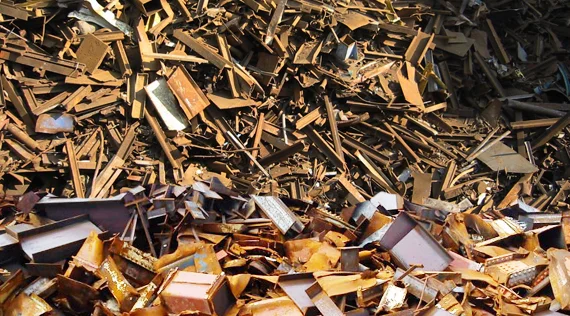Global steel demand soars
Metal Recycling News | 2011-02-16 22:56:33
According to the Steel Index, the price for carbon steel plate in Europe and the United States was $887 per ton for the first week of February. And over the first half of 2011, European steel prices are projected to hit new all-time highs.
By Matthew Carr, Investment U Research
The price of copper is breaking records. So is the price of tin. And we’re all well aware of gold’s 10-year run to record levels.
But another material is also getting a lift: steel.
Why? Because the U.S. economy is recovering. And the global economy continues to heat up, too, fueled by booming, resource-hungry emerging economies.
So could 2011 be steel’s year? In January alone, the price of steel shot up 10% over its December 2010 performance, rising from $736 per ton to $813 per ton.
And as the Australian floods drive up the price of coking coal (which in turn, drives up the price of iron ore), the price is poised to go higher still.
You see, Queensland, Australia produces about 45% of the world’s coking coal. And the impact of the floods mean the price is expected – at the very least – to approach the record set in 2008 at $300 per ton. And it could shoot past that if buyers get desperate enough.
The only way for steelmakers to offset higher raw material costs is to raise their own prices. And they’re doing just that…
Why Rising Steel Prices Are A Double-Edged Sword
According to the Steel Index, the price for carbon steel plate in Europe and the United States was $887 per ton for the first week of February. And over the first half of 2011, European steel prices are projected to hit new all-time highs. The price of carbon steel is anticipated to top $1,000 per ton in 2011, closing in on its own record of $1,160 per ton, set in 2008.
But this is a double-edged sword.
Higher costs cut into profit margins. For example…
- United States Steel Corporation (NYSE: X) just posted its seventh quarterly loss in the last eight quarters.
- AK Steel Holding Corporation (NYSE: AKS) posted its second consecutive quarterly loss.
- The world’s largest steelmaker, Arcelor Mittal (NYSE: MT), recorded a fourth-quarter loss of $780 million (although that was down from $1.1 billion in the black a year ago).
Yet the companies’ share prices continue to move higher.
Why? Because the demand outlook for steel is rosy, buoyed by the fact that, despite the losses, steel-maker shipments increased in 2010.
In 2008, for example, the recession, the downfall of automakers and the collapse of real estate sucker-punched the steel industry. In 2009, worldwide consumption contracted 6.6%. But in 2010, the steel industry bounced back as demand increased more than 13%.
And what’s driving this demand?
Three Ways to Play the Steel Industry, As Emerging Market Demand Climbs
Emerging markets – particularly demand from China.
The number is projected to rise by another 6% to 7% in 2011, setting a world record for steel demand, before continuing even higher in 2012.
With worldwide steel production expected to set a record in 2011, investors looking to play the rising price of steel have a few options…
- Buy Steel Stocks: Arcelor Mittal, AK Steel and U.S. Steel are all up at least 10% over the last six months. And they’re still below the 52-week highs they set back in April.
- Target Iron Ore Producers: Take a look at the world’s largest, Brazil’s Vale S.A. (NYSE: VALE). Vale is up 30% over the last year and the Brazilian government is throwing down the gauntlet to China. It wants to triple the country’s iron ore output by 2030.
There’s also the option of North America’s largest iron ore producer, Cliffs Natural Resources(NYSE: CLF), which is up 122% during the past 12 months. And the company announced it’s gobbling up rival Consolidated Thompson Iron Mines, Ltd. (Toronto: CLM.TO) for $4.9 billion in cash.
 By
By 